



scroll
↓
DNA is more than the building blocks of life. It is also a data format that we can use to securely and sustainably store our precious data.
Despite being the oldest data technology, amazingly DNA is also the cleanest and most efficient data technology in the known universe.
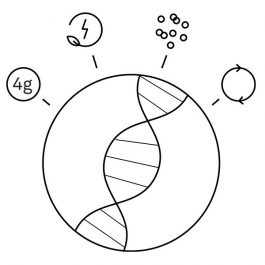
DNA is dense, clean, and abundant as it has been around for billions of years. Best of all it's designed to work in harmony with nature.

Dense

Clean

Abundant

Regenerative
Only 4g of DNA could store the data we produce globally
Powered through natural processes, storing data requires minimal energy
DNA never goes obsolete, is found everywhere and lasts thousands of years
Compatible with organisms which absorb CO2 and help to restore ecosystems
Digital data, whether it's an image file, a piece of text or an mp3 can be represented as binary bits (0s and 1s).
This sequence of 0s and 1s can be translated into DNA bases (A, T, G, and C), and represented as a string of DNA.

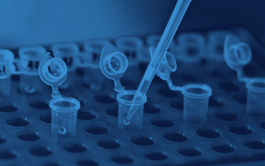
Synthetic DNA can then be synthesized so that the digital data it represents is stored in molecular form.
This DNA carries the same information as the digital data and can be introduced into a living organism where it is maintained, along with the organism's native genomic DNA.

All the data you create in a year could be stored in a single drop of DNA.
Server farms today take up enormous amounts of space, consuming enormous amounts of energy and water. A data centre running on DNA data technology would instead take up a fraction of the size, energy and resources. A truly clean data technology.

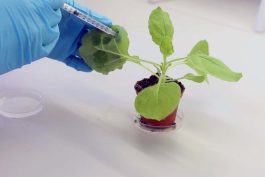
We take DNA data storage to the next level. To create data storage that isn't just green, it's carbon absorbing.
We work with plants. Planet Earth's true superheroes: they create their own energy, self-replicate, absorb CO2 and provide us with oxygen. They can also store data.
Plants and trees like all organisms are made of DNA. Some plants have enormous genomes - up to 50x larger than ours. This means that plants also have the potential to store huge amounts of data within their DNA.

While we take DNA data storage to another level, working with amazing carbon absorbing organisms like plants and trees is not to be taken lightly.
That's why we ensure that our processes do not harm or alter organisms in any characteristic way. In other words, our techniques have no negative impact on the organism or ecosystems.
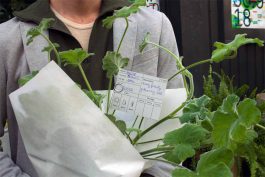
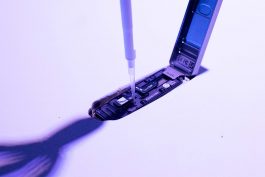
GYOC have developed data decoding processes using DNA sequencing equipment able to read the genetic information of organisms and digital data stored in their genome. For more information please visit the Data Garden
While these methods are currently expensive and technically challenging, DNA data storage is following its own version of Moore's Law. This helps to unlock a vision of the future where reading and writing data via DNA data technology will be accessible to all. Where your data could grow in data forests.

scroll
↓
DNA is more than the building blocks of life. It is also a data format that we can use to securely and sustainably store our precious data.
Despite being the oldest data technology, amazingly DNA is also the cleanest and most efficient data technology in the known universe.

DNA is dense, clean, and abundant as it has been around for billions of years. Best of all it's designed to work in harmony with nature.

Dense
Only 4g of DNA could store the data we produce globally

Clean
Powered through natural processes, storing data requires minimal energy

Abundant
DNA never goes obsolete, is found everywhere and lasts thousands of years

Regenerative
Compatible with organisms which absorb CO2 and help to restore ecosystems
Digital data, whether it's an image file, a piece of text or an mp3 can be represented as binary bits (0s and 1s).
This sequence of 0s and 1s can be translated into DNA bases (A, T, G, and C), and represented as a string of DNA.


Synthetic DNA can then be synthesized so that the digital data it represents is stored in molecular form.
This DNA carries the same information as the digital data and can be introduced into a living organism where it is maintained, along with the organism's native genomic DNA.


All the data you create in a year could be stored in a single drop of DNA.
Server farms today take up enormous amounts of space, consuming enormous amounts of energy and water. A data centre running on DNA data technology would instead take up a fraction of the size, energy and resources. A truly clean data technology.

We take DNA data storage to the next level. To create data storage that isn't just green, it's carbon absorbing.
We work with plants. Planet Earth's true superheroes: they create their own energy, self-replicate, absorb CO2 and provide us with oxygen. They can also store data.
Plants and trees like all organisms are made of DNA. Some plants have enormous genomes - up to 50x larger than ours. This means that plants also have the potential to store huge amounts of data within their DNA.


While we take DNA data storage to another level, working with amazing carbon absorbing organisms like plants and trees is not to be taken lightly.
That's why we ensure that our processes do not harm or alter organisms in any characteristic way. In other words, our techniques have no negative impact on the organism or ecosystems.

GYOC have developed data decoding processes using DNA sequencing equipment able to read the genetic information of organisms and digital data stored in their genome. For more information please visit the Data Garden.
While these methods are currently expensive and technically challenging, DNA data storage is following its own version of Moore's Law. This helps to unlock a vision of the future where reading and writing data via DNA data technology will be accessible to all. Where your data could grow in data forests.